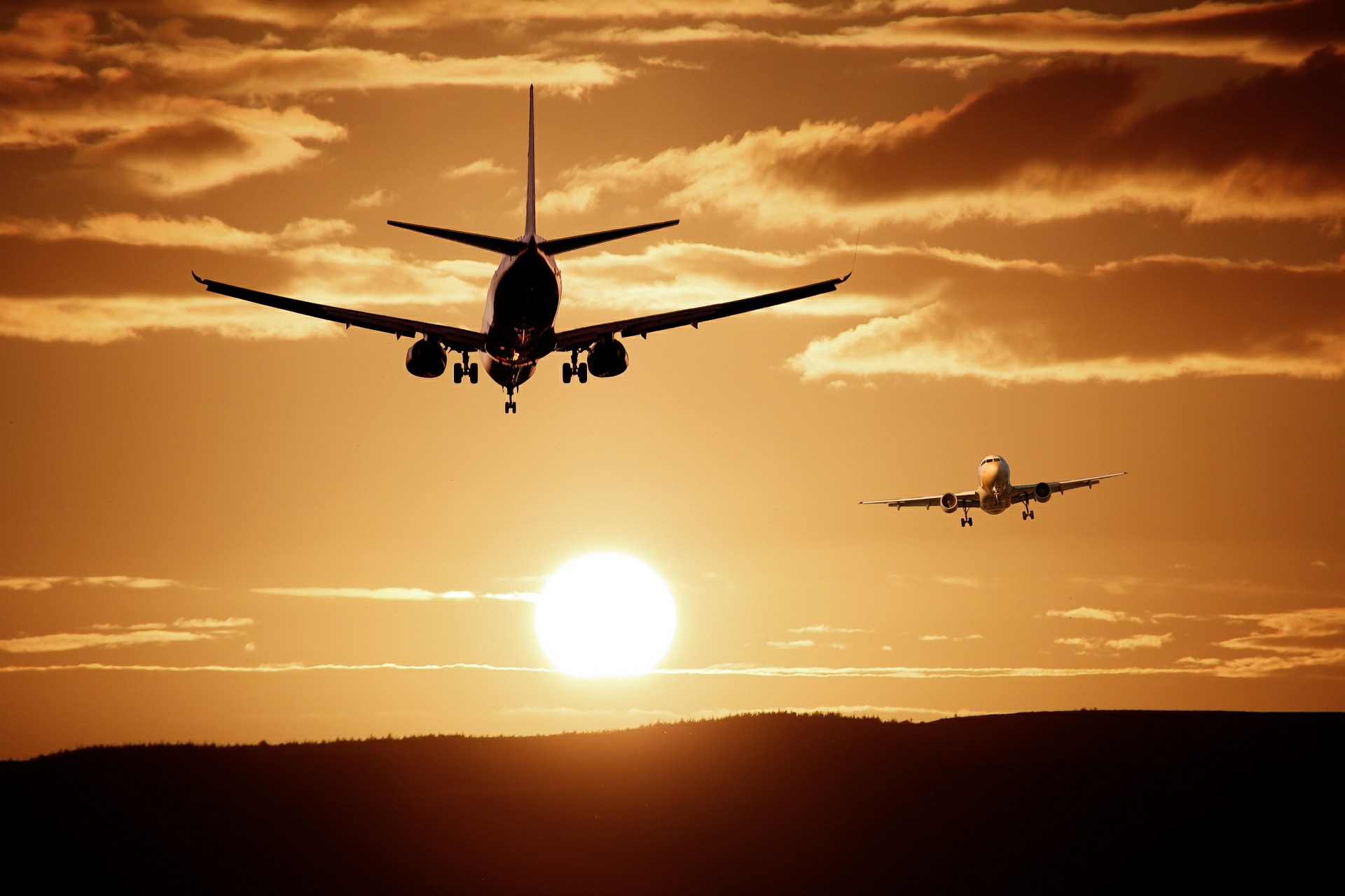With 2022 off to a busy start, Air Cargo News caught up with a range of companies to find out what their expectations are for the coming 11 months. Damian Brett reports.
Around September last year, the air cargo industry was tentatively hoping that the market could be setting out on the road to normality.
Major economies were slowly opening up as Covid case numbers were showing signs of easing and passenger operations were beginning to get back underway as travel restrictions were lifted.
Then November arrived bringing with it the Omicron variant. Lockdowns, travel restrictions, supply chain issues and reductions in bellyhold and freighter capacity on major trade lanes ensued.
Adding to those challenges, the start of the year also sees the industry having to contend with the two-week Chinese New Year holiday, which typically sees a surge of cargo ahead of factory closures, and this year the Beijing Winter Olympics is expected to cause further disruption.
With the year off to a challenging start, Air Cargo News caught up with a cross section of the industry to find out their expectations for the remainder of 2022.
DSV vice president and head of the DSV Air Charter Network, Mads Ravn, tells Air Cargo News he expects a roller-coaster market with Covid continuing to disrupt supply chains, while bellyhold operations will be slow to return.
“Demand will remain strong in every sector and, as the year has already proven, Covid will continue to play a major role in whether capacity will return,” Ravn says.
“Especially on key routes from China and Hong Kong – where they continue to have some of the most severe restrictions – we need some sort of consistency throughout the year.”
He adds: “Belly carriers are trying to piece a programme together with multiple new seasonal destinations that will not necessarily benefit the lack of capacity in the market to and from core manufacturing sites.”
DSV believes that the return of belly capacity to pre-crisis levels is being pushed further out.
“The initial anticipation of 2025 is likely not happening and destinations serviced will change as business travel is very slow to come back,” he says.
“Therefore, we are focusing on maintaining and developing our own DSV Air Charter Network so we can continue to provide as much reliable and flexible capacity as possible for our customers.”
Ravn says handling operations are also likely to come under pressure this year.
“To secure enough people on the ground is perhaps the most severe challenge in several gateways in North America and Europe,” he says.
“This, combined with outdated US infrastructure and lack of staff returning to work, will also influence and slow down recovery.”
Scan Global Logistics (SGL) says it expects the unpredictability of 2021 to continue into this year.
“We expect the market to be pretty much the same as in 2021; travel-restrictions, no clarity about Omicron and potentially other [variants] to follow, and no, or only limited, additional freighter-aircraft to be supplied to the market.
“This will keep constant pressure on the capacities and rates. [Covid] test kits, ocean challenges, airport/ground handling issues etc will remain, leading to increasing charges.”
Looking at seasonal trends, SGL says that the first quarter will remain challenging with rates elevated, the second quarter and early on in the third quarter may see an easing of the situation before the peak season ramps up in mid-September.
On the return of bellyhold capacity, SGL’s global head of airfreight, David Wystrach, says: “Mid-term on this side of the summer, travel restrictions and uncertainty will continue to limit leisure travel.
“Business travellers will not be back to anywhere close to pre-Covid-times. This will limit number of flights and served port pairs.
“Some routes added to the network may be less cargo friendly, e.g. leisure destinations on transatlantic routes.
“On top of this, the current Omicron [variant] will as well impact crews and pilots and with this further reductions on rotations are to be expected.”
Wystrach is also expecting ongoing labour issues across the market to affect ground handlers, forwarders, airlines and trucking companies.
Hervé Bonis, deputy chief executive, Seafrigo Group, says Omicron and seafreight issues will drive demand in the air: “The overall global environment remains uncertain in the first quarter of 2022 due to the high circulation of the Omicron variant of Covid-19 in most western countries.
“This is already impacting on airfreight capacity, especially regarding the China/Hong Kong trade lanes where stringent rules for pilots are in place.”
He adds: “The biggest challenge is definitely to get back to normal regarding intercontinental travel, which then brings back the belly capacity that is not currently available in the market. I expect belly capacity to increase during second half of 2022.
“Regarding our overall volumes, I consider that we will still face seafreight disorganisation, including port congestion, and this will bring opportunity in terms of airfreight volumes.”
Crane Worldwide Logistics chief executive Keith Winters is another expecting labour issues to affect the market.
“There is no question that we are still expecting some turbulent times ahead,” Winters says.
“Currently, with the resurgence of Covid, new vaccine boosters need to be moved and there is still the possibility of borders closing as countries cope with the influx in cases.
“With blank sailings and the Lunar New Year ahead, it’s expected that the first quarter will create more demand which will continue to add pressure in terms of cost.”
On the return of belly capacity, Winters says this is highly dependent on borders opening up.
“We can be hopeful that the new variant will see the end of the pandemic, but there are still so many unknowns,” he says.
“With new aircraft being lined up for charter flights, there will be options, but for now I think we need to look further afield than 2022 to return to what we consider ‘normal’ bellyhold capacity.”
Airlines are also expecting demand to be tight over the coming year.
Roger Samways, vice president commercial, American Airlines Cargo, says that despite some return of passenger flights, indicators suggest that demand improvements and congestion in other modes will contribute to capacity shortages in air.
“Continued capacity shortages in the market, relative to demand, as well as infrastructure challenges at airports, will present ongoing challenges for the air cargo industry,” says Samways.
“We have faced capacity shortages since the start of the pandemic, but we’ve seen innovative, creative solutions across the industry as carriers have tried to support the needs of our customers.”
Samways adds that belly capacity will improve in 2022 compared with last year but won’t get back to 2019 levels due to changing government travel restrictions and possible future Covid-19 outbreaks.
“Our current expectations are that widebody capacity will grow around 20% compared to 2021. The key for our cargo customers, though, is where that capacity is going to be deployed.
“Unlike in 2021 when many of our widebody aircraft were operating on short-haul leisure markets, such as the Caribbean and Mexico, in 2022 our widebody fleet will primarily be deployed on long-haul international markets which is great news for our cargo customers.”
Charter outlook
Charter brokers are also bracing for another busy year. Dan Morgan-Evans, group cargo director at Air Charter Service (ACS), says the disruption experienced over the last couple of years has been too great to unwind completely during 2022.
“The longer time goes on, the more balanced it will become but we are still seeing very strong demand in the short term and long term, with a record number of forward bookings even into 2023,” he says.
“The whole supply chain has changed over the past two years and, unless we suddenly revert to pre-pandemic passenger numbers and all travel restrictions are lifted, then we will continue to see strong demand.”
He says that ACS was previously used to seeing single ad hoc flight bookings with the occasional programme for multiple flights. Now, the company is seeing bookings that are predominantly programmes.
“The challenges will be similar,” he adds. “Covid restrictions, lack of capacity, bottlenecks at airports – but these are all the benefits of using a company like ACS.
“The marketplace is complicated. Whether that’s the aforementioned, or people out there trying to take advantage with phantom aircraft and fictitious contracts.”
Neil Dursley, Chapman Freeborn chief commercial officer, cargo, says the continued impact of Covid-19 shows little sign of slowing down and there is no return to “business as normal” insight.
“What we are seeing in the first weeks of this year is ‘more of the same’; a distinct lack of widebody availability and supply chain challenges impacting the major ocean ports of the world with new restrictions due to new Covid outbreaks in strategic ocean ports. This continues to force more and more cargo into the air.”
Dursley adds that there has been a surge in demand for Covid test kits. The broker has just completed “an enormous programme of flights” utilising multiple AN-225 and AN-124 flights, including on Christmas day.
“Never before in our history, or I believe in the history of the AN-225, has it ever operated so many back-to-back missions,” Dursley says.
“The good news for our clients is that pricing on widebodies from Asia to Europe, as well as transpacific routes, has reduced in January vs December, but we anticipate that this will again increase following the Chinese New Year.”
He adds that freighter operator Magma Aviation, a Chapman Freeborn Group subsidiary, continues to operate at full capacity to and from a range of origins.
He says: “Restrictions on crew due to Covid outbreaks in key locations is creating issues but ones which our partners are supporting so that supply chain continuity isn’t impacted.”
Looking at sectors driving demand, Dursley says that the company is heavily involved in humanitarian related movements for vaccines, test kits and emergency supplies.
“Likewise we see increases in automotive, hi-tech and oil & gas related activities.
“We have continued long-term programmes of e-commerce related movements using passenger-cargo aircraft as well as full freighters utilising both group assets and many third-party airline partners.
“So this storm rages on and with it we are expanding rapidly and recruiting currently over 100 full time employees to support our clients as well as opening up multiple new offices around the globe.”
Navigating the challenges ahead
With another year of disruption and unpredictability ahead, what steps are companies taking to try and navigate the challenges that lie ahead?
Crane Worldwide Logistics’ Winters says that close collaboration, information sharing and flexibility are key to managing the current market conditions.
“It takes all key members of the supply chain to work closely with clients, manage expectations and find solutions that will work in the long term.
“Supply chains are being reassessed by many organisations and are also at the top of priority lists in 2022.
“There is evidence that companies are reverting to nearshoring, alternative routings, transportation switches etc.
“We believe that working together closely with our clients, we can bring the expertise needed to provide solutions, not only the urgent situations, but also in the long term.”
He says these solutions could be additional charter capacity, extra 3PL warehousing or alternative methods of transportation such as rail freight.
Ravn of DSV says that forwarders will need to invest in their own controlled capacity to add some consistency and longevity for customers that commit to capacity and rates.
“Most air carriers have become transactional during last year and there is an intense battle to secure the best commitments in the market,” he says.
“It puts clients, who have been consistent supporters on particular lanes, in a very [difficult] situation, hence they are turning to forwarders like DSV with own controlled charters to leverage their spend, which is often connected to other parts of the supply chain.”
From an airline perspective, Samways of American says that the airline has learnt to expect the unexpected.
He agrees that collaboration across the supply chain is key to managing the situation.
Samways says: “From an industry perspective, increased investment and closer working relationships with industry partners will be important in helping to ensure that we are able to operate efficiently and accommodate as much cargo is possible.”
He adds: “For American, that has included working with our network planning team to help ensure the rebuilding of our widebody network meets both PAX and cargo needs and looking at how we can best utilise our existing narrowbody and trucking networks to help bridge routes and create more options for customers.”
He adds that the airline has already made plans for nearly all its widebody fleet to be dedicated to long-haul international routes, which is ideal for the cargo division.
The company is also poised to take delivery of more than 40 Boeing 787 aircraft over the next few years, which Samways says will help to support further capacity growth across American’s network.
Wystrach of SGL says that it is important that forwarders remain very proactive and that customers keep a high focus on their approach to planning.
“Keeping up with constant schedule changes, impact of airport/port congestions etc., will require an ongoing agility and solution-driven attitude,” he says.
“This will continuously require flexibility for forwarders and customers in regards to pricing, transit times and routing opportunities.
“Constant proactive communication, including offering multiple solutions enabling our customers to make a conscious decision on how to balance cost and supply chain risk, is and will remain a key priority for us.”
Source: www.aircargonews.com
Image: www.pixibay.com









